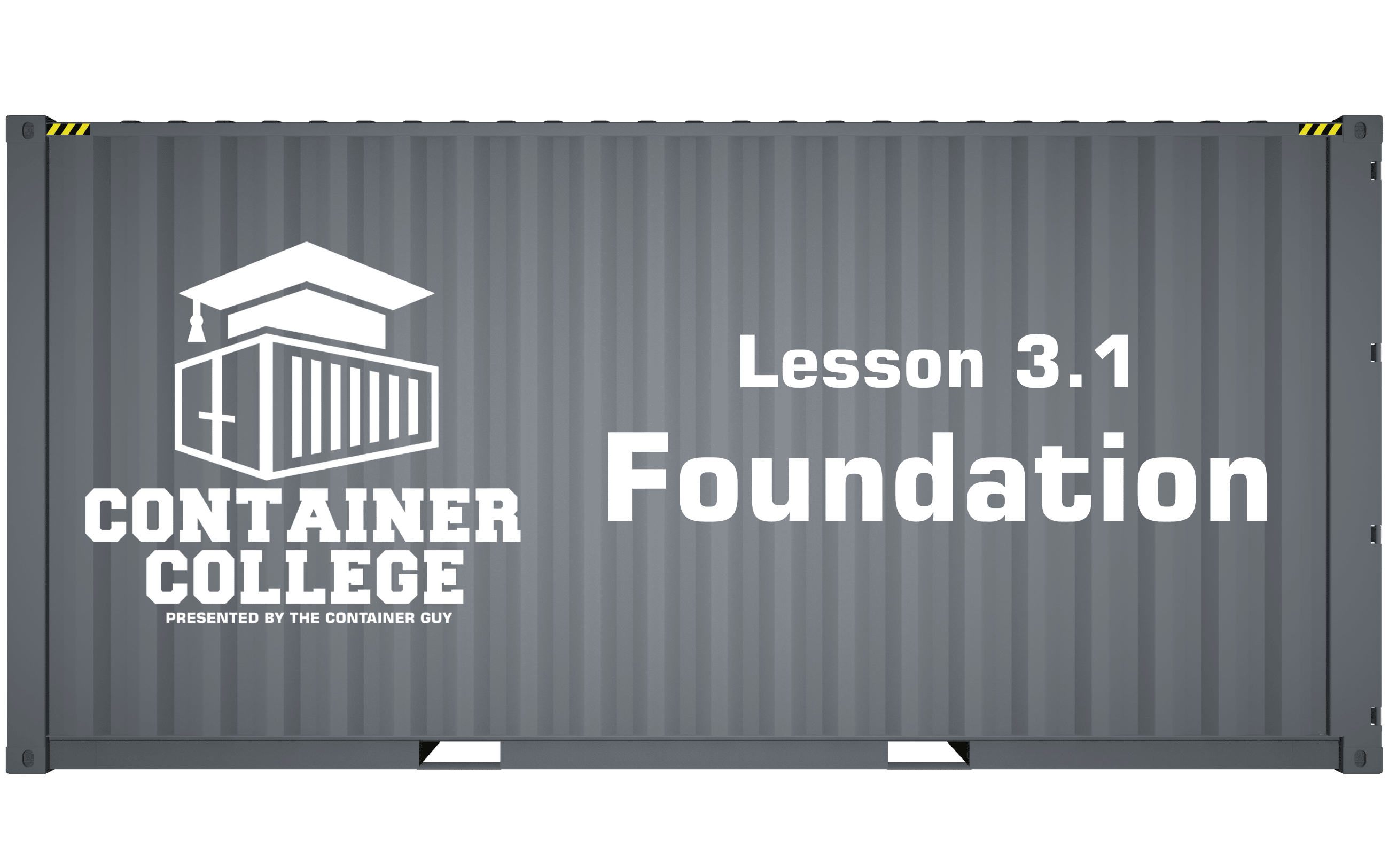
Before cutting a window, adding insulation, or even wiring in a light switch, you need to make one crucial decision: what’s your shipping container going to sit on? The foundation you choose will determine how long your container lasts, how well it resists moisture, and how easy it is to modify down the road.
Why Foundations Matter
A shipping container is designed to sit on the corner castings, not directly on the ground. Without a proper foundation, your container can:
- Rust prematurely from trapped moisture.
- Shift or sink, especially in soft or uneven soils.
- Warp or twist, making doors hard to open and close.
- Fail inspection if your project needs permits or code approval.
A good foundation keeps your container level, dry, and stable, and sets the stage for everything else in your build.
Common Foundation Options
1. Concrete Slab
A full concrete slab is one of the most durable options. It provides a level surface, acts as a moisture barrier, and is ideal for permanent installations like workshops, offices, or homes.
- Pros: Extremely stable, long-lasting, resists shifting.
- Cons: Higher cost, not ideal for temporary placements, requires excavation and curing time.
2. Concrete Piers or Footings
Concrete piers poured under each corner casting (and sometimes midpoints) provide solid load-bearing points.
- Pros: Strong, less material than a slab, allows airflow under the container.
- Cons: Requires careful measuring to ensure level placement, may shift in frost zones without proper depth.
3. Screw Piles
Helical screw piles are a modern solution that work well in a variety of soil conditions. They’re drilled into the ground, providing stable anchoring points for the container’s corners.
- Pros: Quick to install, reusable, adjustable, excellent for uneven ground.
- Cons: Typically requires professional equipment, costs more than basic piers.
4. Gravel Pad
A compacted gravel pad is one of the most common and budget-friendly foundations, especially for storage containers.
- Pros: Easy to DIY, promotes drainage, and is affordable.
- Cons: Less stable long-term, can rut or wash out if not compacted properly, not suitable for container homes.
5. Timber or Rail Ties
Heavy timber beams or rail ties can be placed under the container’s length to elevate it off the ground.
- Pros: Fast, inexpensive, easy for temporary storage.
- Cons: Wood can rot over time, is not suitable for permanent use, may not meet building codes.
Choosing the Right Foundation
The best option depends on how you plan to use your container:
- Temporary storage → gravel pad, timber beams, or simple piers.
- Workshops, offices, or long-term storage → concrete piers or screw piles.
- Container homes or permanent builds → full concrete slab or engineered screw pile foundation.
Final Thoughts
Just like any building, a container is only as strong as the foundation it rests on. Cutting corners here can lead to rust, shifting, or costly repairs later. Take the time to choose the right base, prepare the site properly, and make sure your container is supported exactly where it needs to be — at the corners.
At The Container Guy, we’ve helped place containers on everything from farmyards to urban job sites. No matter your project, getting the foundation right is the first step to building something that lasts.
See our foundation advice for containers in action on YouTube here and here.



